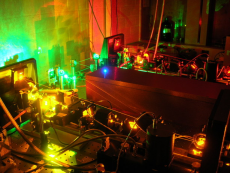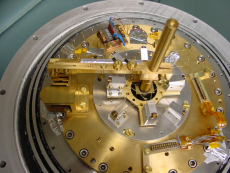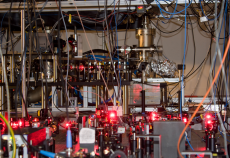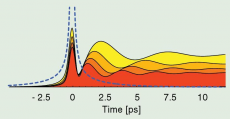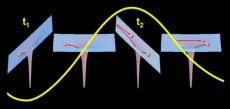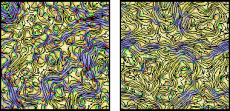CQD Special Seminar
2. August 2023 17:00
Physikalisches Institut, INF 226, Konferenzraum 1-3Ultrafast Rydberg experiments with ultracold atoms in optical tweezers
Dr. Sylvain de Léséleuc
Institute for Molecular Science, National Institutes of Natural Sciences, Okazaki, Japan
Rydberg atoms, with their giant electronic orbitals, exhibit dipole-dipole interaction reaching the GHz range at a distance of a micron (C3 ~ GHz.μm3), making them a prominent contender for realizing ultrafast quantum operations. However, such strong interactions have never been harnessed so far because of the stringent requirements on the fluctuation of the atom positions and the necessary excitation strength. Here, we introduce novel techniques to enter this regime and explore it with two strongly-interacting single atoms [1].
First, we trap 87Rb atoms in holographic tweezers focused with a high-NA lens (0.75), allowing to bring two atoms at distance as close as 1.2 µm. The atoms are then cooled to the motional ground-state of the tweezers and thus localized with a quantum-limited precision of 30 nm, which allows to unlock coherent ultrastrong interaction. Then, we use ultrashort, picosecond, laser pulses to excite a pair of these close-by atoms to a Rydberg state simultaneously [2], far beyond the Rydberg blockade regime.
Following excitation, atoms experience the dipole-dipole interaction, which, for our particular choice of Rydberg state, gives rise to an energy exchange between the two atoms [3]. We observe this coherent dynamic occurring on the nano-second timescale. After a full exchange, the atoms are back in their initial orbitals with a π-phase shift. We measured this phase shift by probing the superposition of a ground and Rydberg orbital by Ramsey interferometry with attosecond precision. This phase shift is the key to the realization of an ultrafast two-qubit C-Z gate. The techniques demonstrated here opens the path for ultrafast quantum simulation and computation operating at the speed-limit set by dipole-dipole interactions.
References
[1] Y. Chew et al., “Ultrafast energy exchange between two single Rydberg atoms on a nanosecond timescale”, Nat. Photonics 16, 724 (2022).
[2] Mizoguchi et al., “Ultrafast creation of overlapping Rydberg electrons in an atomic BEC and Mott-insulator lattice”, Phys. Rev. Lett. 124, 253201 (2020).
[3] Ravets, S. et al. “Coherent dipole–dipole coupling between two single Rydberg atoms at an electrically-tuned Förster resonance”, Nat. Physics 10, 914 (2014).


